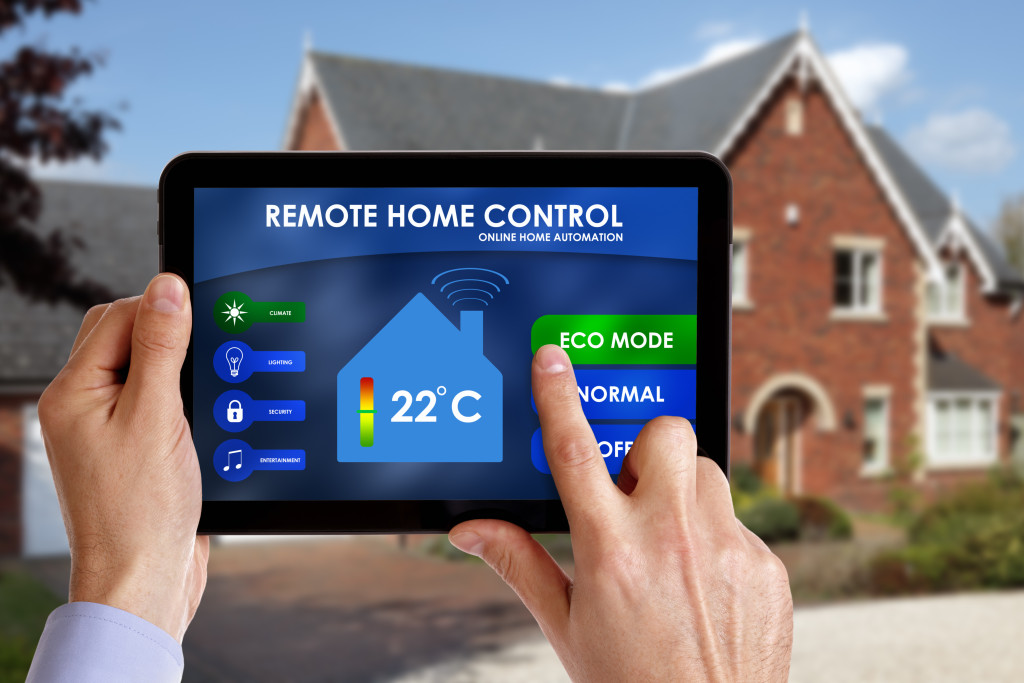- Utilize renewable energy sources like solar and wind power.
- Make your home more energy efficient by using LED lights, weatherizing windows, and replacing old appliances.
- Reduce water consumption through low-flow showerheads and toilets, full-load washing machines, and only running dishwashers when complete.
- Reduce waste stream through recycling, composting, and reducing packaging use.
- Utilize inspection so that you can identify sources of pollution right away.
A reduced carbon footprint is an important part of caring for your environment. Every day, you have the opportunity to make small choices that can help you reduce your impact on the planet. This guide outlines ways to reduce your home’s carbon footprint.
1. Utilize Renewable Energy Sources
Using renewable energy sources is a great way to reduce your home’s carbon footprint. With widely available solar, wind, geothermal and other renewable energy options, it can be more accessible than ever to achieve green energy goals. Investing in renewable energy technologies like solar panels or wind turbines can significantly reduce your household’s carbon emissions without sacrificing comfort.
Harness Solar Power
Photovoltaic (PV) systems or solar panels allow you to generate electricity from sunlight and can be used in homes and businesses. As technology improves, prices become more affordable, making it a viable option for many households. Ensure that your home’s roof can support the weight of solar panels and that it is facing southward to maximize exposure to sunlight.
Generate Wind Power
Wind turbines capture the kinetic energy created by moving air, converting it into electricity. Unlike solar panels, wind turbines can be installed on larger properties or commercial sites. If you’re thinking about installing them, consult a qualified technician first, so they can assess your site and determine the best location for the turbines.
Drill Deep For Geothermal
Geothermal energy is generated from heat stored beneath the ground and can generate electricity or provide home heating and cooling. To use geothermal energy, you must install a vertical or horizontal loop system beneath your property. Again, you must seek professional advice before drilling to avoid damaging underground cables or pipes.
Utilize Micro-Hydro Systems
Micro-hydro systems use a small-scale water turbine to generate electricity from rivers and streams. This type of renewable energy is ideal for those living in rural areas with access to running water and property owners with extensive gardens that contain a stream or pond. It’s important to note that micro-hydro systems require a steady flow of water unavailable in all areas.
2. Increase Your Home’s Energy Efficiency

Making your home more energy efficient is a great way to reduce carbon footprint. Simple actions like installing LED light bulbs, weatherizing windows and doors, and replacing old appliances with more efficient models can drastically reduce the amount of energy your home consumes. Renewable energy sources like solar panels or geothermal systems can also help reduce your home’s overall carbon footprint. With the right information and dedication, you can make your home more energy efficient and save money.
3. Practice Water Conservation Techniques
Another great way to reduce your home’s carbon footprint is to reduce the water you use. This can be done by installing low-flow showerheads and toilets, using a washing machine with full loads instead of multiple small ones, and only running the dishwasher when it’s complete. You can collect rainwater in barrels that can be used to water your yard, plants, or garden. Just these small changes can make a big difference.
4. Reduce Your Waste Stream

Reducing the amount of waste your family produces is another important way to reduce your home’s carbon footprint. This can be done by recycling paper, plastic and glass products, composting food scraps and yard trimmings, and reducing the amount of packaging you use. Purchasing items with minimal packaging, bringing reusable bags to the store, and ensuring that all recyclable materials are properly sorted can help you reduce your waste stream. When it comes time to replace furniture or appliances, look for those made from recycled materials. You can significantly reduce your home’s carbon footprint by reducing the waste your family produces.
5. Utilize Inspection
Utilizing inspection is the last tip for reducing your home’s carbon footprint. Stormwater Pollution Prevention Plans (SWPPP) can help you identify potential sources of pollution and areas where stormwater runoff may occur on your property. These plans document the measures taken to reduce storm pollutants and protect water resources from further harm. It’s important to have a plan to ensure your property complies with local and state regulations.
Final Words
Reducing your home’s carbon footprint is good for the environment and can help you save money in the long run. These five tips will set you on the path to becoming a more eco-friendly and responsible homeowner. So what are you waiting for? Start taking steps today to reduce your home’s carbon footprint and make a positive impact on the environment.




